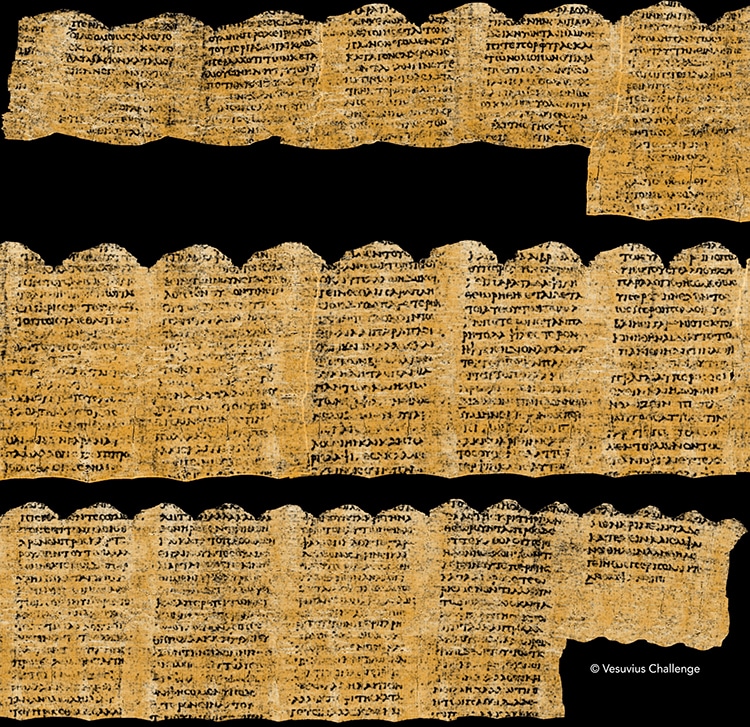(Photo:Vesuvius Challenge)
Mount Vesuvius erupted in the year 79 CE.
In nearby Herculaneum, volcanic material blanketed a wealthy noble’s villa.
Inside the library of the home, precious scrolls were carbonized by the heat.

2,000-year-old text. (Photo:Vesuvius Challenge)
Looking like oddly shaped lumps of coal, they were discovered in 18th-century excavations.
However, reading the long lost words has been impossible until recently.
The process began with CT scans of the carbonized rolled parchments.

The text. (Photo:Vesuvius Challenge)
The first task was to decipher the carbon ink upon the carbonized surface, which Seale himself worked upon.
Then in October 2023, Luke Farritoran American studentfound thefirst legible worldamong the rubble.
It was porphyras, ancient Greek for purple.
Their algorithm was able to read over 2,000 Greek characters from the charred remains of the scrolls.
This easily nabbed them the prize of $700,000.
The translated text discusses food, music, and pleasure.
According to a statement from the Vesuvius Challenge, Scholars might call it a philosophical treatise.
The questions he seems to discusslifes pleasures and what makes life worth livingare still on our minds today.
Modern minds can only wait and dream for the rest of the texts.